#the folktales of supernatural
Text

Need to write a 4000 word essay and take a neurobio final before I’m done with the term and both are due Thursday so we’re going back to the procrastination doodles again
#spade pirate sabo au#sabo#my essay is kind of a banger!!#it’s a Japanese literature class#something something the maintenance of systems of power and belief#through the idea that sight and knowledge are power#which interfaces interestingly with the supernatural which by virtue of its unknowability has some inherent value greater than mortals#and how these folktales are a way for the working class common folk to fantasize about the higher class and nobility through storytelling
457 notes
·
View notes
Text

The Grey Man of Ben MacDhui.
It normally stalks its victims until they realize that it is following them, and then it chases them. This is a common pattern. It walks on two legs and runs, like a normal person.
The Grey Man is frequently encountered on the mountain, but sightings also extend to Rothiemurchus Forest near Aberdeen. References to these mysterious 'Grey Men' date back to the 13th century, and numerous climbers over the years have reported seeing, hearing, or sensing the presence of the Grey Man.
Often the Grey Man is encountered in physical sensation, but without a true physical form. Sensations of this type include vast, dark blurs which obscure the sky, strange crunching noises, echoing footsteps which pursue the listener, an icy feeling in the surrounding atmosphere, as well as a physical feeling of a cold grip on, or brush against the observer's flesh. There is also a high-pitched humming sound, or the singing as it is sometimes called, which is associated with Ben MacDhui and the Grey Man.
Additionally, the Grey Man has an extremely powerful psychic effect. Visitors to Ben MacDhui report a feeling of overwhelming negative energy. Occasionally, this is described as extreme lethargy and despondency. More often, it is typified by acute fear, apprehension, and an overwhelming panic, leading to suicidal thoughts or physical flight from the area. Generally, this fear is accompanied by the physical sound of echoing footsteps chasing the observer and sometimes the sound of a resonant and yet completely incomprehensible voice, which seems to be faintly Gaelic in nature.
Follow @mecthology for more lores and legends.
Pic generated by AI.
Source: cryptidwiki
#mecthology#creepy#supernatural#myth#weird#mitoloji#legends#folklore#benmacdhui#scotland#gaelic#folktale#spirit#guardian
26 notes
·
View notes
Text

Happy 420! Here’s beat sheet fan art to celebrate
#streambeatsheet#wheres that quote thats like#fanfiction is revolutionary in a world where folktales are owned by corporations not the folk#wow#i am obviously super stoned rn#deancas#stonernatural#destiel#supernatural#stonernatural draws
60 notes
·
View notes
Text
Our next topic..... Kitsunes
In early Japan, there was a deity named Inari that created intelligent foxes that he let roam the earth. Each one had a unique and specific title that was tied to the earth in some way, shape, or form. There was a sound, thunder, forest, mountain, ocean, river, earth, wind, fire, spirit, celestial, and dark kitsune. The only reason why they are so powerful is because of their connection to the Deity, who lived to trick people himself or send his pets to do it for him. Another reason why their so powerful is because of their tails. The more they have, the more powerful they are. The limit is 9 btw. Lastly, whenever they go into a human body and become one with you like every other spirit, you'll have the ability to use some of their elemental abilities. No, you can't use their abilities to become aang, but you can manipulate them to a certain extent. Moving wind with a thought, spreading fires that have already started, etc.
Warning: The majority of them ARE tricksters. So if you wish to summon one, protect yourself at all times.
#supernatural#supernaturalcommunity#folklore#mythology#mythical creatures#realkitsune#realkitsunes#teen wolf#kitsune#japan#japanese#japanese folklore#japanese folktale#japanese mythology#fox#foxes#spirituality#spirits#spirit#fox spirit#tricksterspirit#nogitsune#deity#deity work#deities#japanesedeity#japanesedeities#possession#elemental#supernaturalabilities
15 notes
·
View notes
Text
Are you ready to know another creature? Today I present:
Maty-taperê - the woman that haunts the northern rural areas
Category: Folklore

Also known as Matinta Perera, Cumade fulozinha and Caipora.
Maty-taperê is part of the brazilian folktale, most likely originated from another entity of the amazonian indigenous tribes. We only have oral tradition on this, most of the details of its real origin were lost and there is severe interference on this tale due to the invasive portuguese.
But who is this entity?
She is an old woman, some people call it a witch, but she does not seem to be any sort of deity or spirit, just a regular old woman. Some versions of the tale say that she transforms into an owl, other versions say the owl is a sort of familiar/pet.
Where can you find this entity?
Almost all regions of Brazil have this old woman within their local folklore, but it's believed that the northern parts of the country have the larger amount of witnesses. This old woman is mostly "seen" on extremely rural areas, nearby forests and even farms - although there are some tales of this woman being seen in small villages.
What does the folklore say about her?
It is said that Maty-taperê will only come very late in the night to disturb people's sleep. Depending on where you listen to the tale, she will either transform into an owl or send her owl to fly over your house and screech. The screetch of an owl, the rasga-mortalha, is the sign of her presence. Some regions of Brazil say she will announces herself by whistling and throwing little stones on your windows and roof.
If someone wakes up with the sound of the owl - or the whistling and stones - they immediatly need to say out loud "Come tomorrow and I'll give you...". You can offer her many things: food, drinks, gifts, but her favorite is tabaco.
After you make your promise out loud, she will leave you and continue to disturb other homes. In the morning, an old lady will knock on your door and expect her gifts. It's strongly advised that you actually give her what you promised, because otherwhise she will curse you and your family with pestilence and even death. Some versions of the tale say that you have to bring your offer to the forest, she will collect it there.
How can I avoid Maty-taperê?
You can't. She randomly chooses who she will disturb during the night. But it is believed she targets the homes of people who disrespect nature in some way (burning trees, killing animals for fun...). Also, she is harmless as long as you give her what you promised. If you don't offer her anything, she will just disturb your sleep for days and days until you give in.
What is something I should know about her?
When the maty-tapere is ready to die, she will knock on the door of houses looking for another woman. She will ask "Do you want?" without specifying anything. If you say "Yes" she will curse you to become the next maty-taperê. If you say "No" she will leave you alone.
Curiosities?
The owl - the rasga-mortalha - is so associated with the Maty-taperê that people really don't like to hear the screech of the owl at all. It is believed that it brings a bad omen. Whenever people hear the owl, they start to pray or cleanse their home in hopes of avoiding something bad happening.

5 notes
·
View notes
Text
The tale of the Kuchisake-onna
The tale of the Kuchisake-onna dates back to the 17th to 19th century in Japan and is described as a woman mutilated, with her mouth split from ear to ear. The tale has various origins, claiming that she either was the adulterous wife or mistress of a great samurai that he became so outraged at hearing his wife was unfaithful that he slashed his wife’s mouth from ear to ear as punishment. Other tales claimed that she was once a great beauty and a jealous woman cut her; or that she had a dental procedure gone wrong. Either way, she died of the blood loss, and she came back as a malevolent spirit who appears to you and asks, ‘Am I pretty?’ Or, ‘Am I beautiful.’

She appears on a usually foggy night to a stranger, according to Kuchisake-Onna | Creepypasta Wiki | Fandom, haunting different places, wearing a mask that hides her face. She will stop a person and ask you directly, ‘‘Do you think I’m beautiful?’’ The person will usually answer, ‘‘Yes,’’ causing her to lower the mask to show off the hideous bloodied scars and ask, ‘‘What about now?’’ If you say no, scissors will appear in her hand, and she will slash you to death. If you still say yes, she will give you the same markings that show on her face, leaving you with the same fate. ‘‘There are several ways to prevent this terrible fate. One, to confuse Kuchisake-Onna by saying: "You are average." Two, present her with hard amber candy, which she'll take much delight in and let you go. Three, say ‘Pomade’ six times, and she will flee. Four, ask her if you are beautiful, which will confuse her hopefully long enough to escape. But be wary. She is said to be incredibly fast and will be unlikely to stop.‘‘

So if you see a strange woman on the street wearing a mask to stop you and ask the words, ‘Am I pretty/Do you think I’m beautiful?’’ I suggest that you adopt an NYC attitude (I can say this, I am from New York) and drop some candies before walking or sprinting away!
#japenese#japanese mythology#japanese folklore#cultures#social science#slitmouth#anthro#folktales#mythology#supernatural#supernaturally
4 notes
·
View notes
Text
The Phantom Hitchhiker: Unraveling the Legend of the Mysterious Traveler
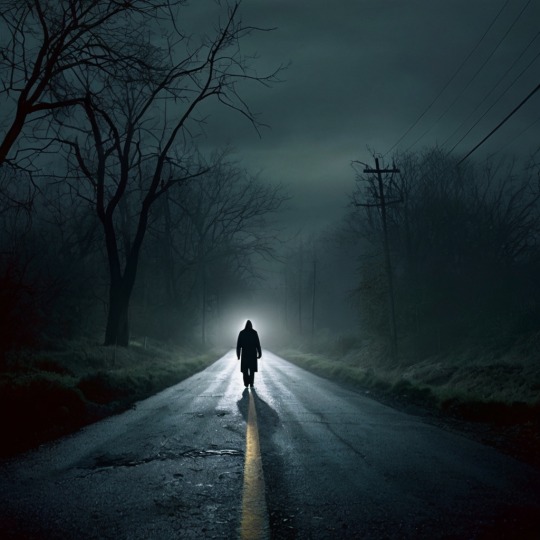
You are driving alone one cold evening and the darkness of the night has suddenly been covered with fog. This is eerie; the wind rustles the trees while only the car’s beams are the only source of light. Around the next curve of the road, characters are found seated on the shoulder, hitchhiking standard in the other hand. Thus, you feel that you have a reason to get there regardless of how the whole place might seem, creepy. Little do you know, this simple act of kindness will plunge you into the heart of one of the most enduring urban legends: Focusing on the subject of the paranormal, one can mention the spectral motorist who can be referred to as the Phantom Hitchhiker.
The Tale Begins:
He began to detail his fairytale tale, recounting the folklore about phantom hitchhikers that can be traced back centuries, tales that hail from every corner of the globe. The narrative often starts the same: a man who is alone on the road and suddenly he is attacked, a nice driver who stops to help him and then, what comes next is really terrifying. These (tales) link the material world and the spiritual one — a mix of affect and horror inherited from folktales.

A Ride with a Stranger:
Seemingly considering the option of giving a lift to the hitchhiker. At least, it is difficult to tell at first, and on second glance, there is a subtle uncanniness to them all. Maybe it’s the clothes they wear, the touch of their skin, their hands, or the fact that a car transforms into a quiet box. It’s a feeling that intensifies with every mile you are on the road, starting with a subtle discomfort that slowly builds and becomes an anxiety. His replies are minimal and he is barely audible, however, his character is dominant and suffocates everyone around. You attempt to brush this off as just the result of the night and the weird feeling that is emanating from the air.
The Ghostly Truth:
At some point, the hitchhiker may guide you to a certain location-an abandoned house, a deserted graveyard or a deserted road. well. Upon arrival, you look to your side only to discover the person sitting beside you has left. Suddenly feels a sudden shock and fear overcomes you and you will find that the passenger you once saw is no longer there. Often, there is a remnant of the hitchhiker, the type of object that contains a photo or a ring as an indicator of the past and of the gloomy fate of the character.

Legends from Around the World:
Some of these tales resemble the I Was a Teenager Hitchhiking Episodes, but differ in details. One of the most popular legends in America is that of the White Lady who wanders the roads and craves company, especially in the state of Nebraska. It is reported that Mizzry Malone’s ghost has been seen wandering the vicinity of Resurrection Cemetery, Chicago, and one would be lucky to pick her up, only for her to vanish as she approaches the cemetery.
Among regional legends, the most famous and well-known are the following: In the BIBLIOGRAPHY section, the key source is cited as “Blue Bell Hill”. Men who decide to give a lift to a weeping woman in white dress near the scene tell of her disappearance before getting to her house.
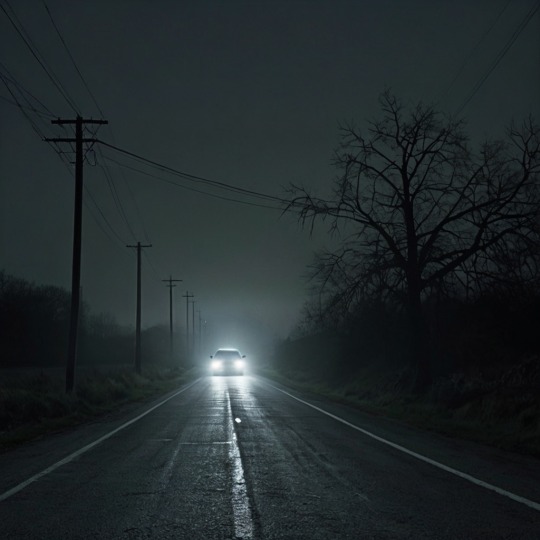
Psychological and Cultural Significance:
As to why these stories are so captivating, the answer lies in the simplicity of what they depict: anthropomorphism. Laypeople attribute such stories to innate psychological issues of city dwellers and to ancient beliefs and concerns about death and life after it. These narratives reveal and explain the system of relationships between the recognized and the non-recognized, between life and death. Also, they convey certain cultural norms for instance the repercussions of non-emergence from the house without notifying any member in the family or the devastating toll of burying an individual before coming to terms with the demise.
From a cultural standpoint, many of these fables and stories can be viewed as folklore that would effectively teach the traveler some significant lessons such as, ‘do not interact with strangers,’ and ‘do not ill-treat the dead. ’ They also focus on people’s interest about the deceased people; to know about their lives even their deaths; and most importantly to get some kind of closure out of it all.
Modern Encounters:
Despite technological advancement rumors of the phantom hitchhiker have continued to surface even today. they are now meshed with modernity that they incorporate with everything from ride hailing apps to horror stories conveyed online. That is why these modern retellings hone in on the essence of the legend telling it in new ways that are as relevant as the original yet unafraid to retain the elements that make them so disturbingly captivating.
Conclusion:
The Eternal Ride,
The story of the Phantom Hitchhiker has remained alive to this generation because it is an expression of humanity’s call for respect, the dread for the unknown and compassion regardless of the evil the world may bring. Regardless of the way in which one takes the mysterious traveler story, it will be told as a fable to be whispered upon a camping party or as an open allegory with other meanings, the mysterious traveler on a lonely road will be one of the scariest stories one could ever hear.
And this brings me to my final question: next time you are on a lonely, pitch-black road, would you pull over to the pickup with the smiling stranger with an outstretched hand? Or will you recall the stories of the ones who tried it and what they experienced before you say yes?
#PhantomHitchhiker#UrbanLegends#GhostStories#MysteriousTraveler#Folklore#Paranormal#GhostTales#HauntedRoads#SpookyStories#HitchhikingGhost#ScaryStories#Supernatural#CulturalFolklore#ModernGhostStories#PhantomTraveler#LegendaryGhosts#NightDriving#EerieEncounters#HauntedHitchhiker#GhostlyEncounters#HauntedLegends#SpiritualWorld#MythicalStories#PhantomRider#GhostLore#MysteryTraveler#HauntedTales#Folktales#UrbanMyths#ParanormalActivity
1 note
·
View note
Photo
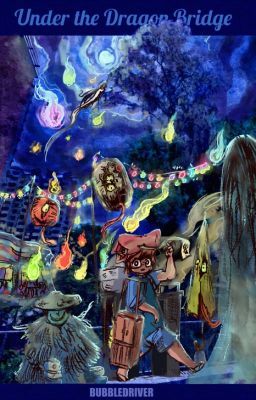
Under the Dragon Bridge - Winter (on Wattpad) https://www.wattpad.com/1442604449-under-the-dragon-bridge-winter?utm_source=web&utm_medium=tumblr&utm_content=share_reading Step into the enchanting world of Mei, a dedicated worker at the massive casuarina tree office building that serves as the heart of a backward spirit town.Living in a cramped HDB flat with her deceased grandparents, Mei's life takes a thrilling turn when a young human boy enters the spirit world in search of his missing sister. As they unravel a secret about Mei's past, she must make a risky decision that could change everything. Join Mei on a mesmerizing journey filled with mystery, friendship, and the power of courage in "Under the Dragon Bridge"
#adventure#chinese#chineseculture#fantasy#fantasyadventure#fantasycreatures#fantasyfiction#folklore#folktale#ghost#local#singapore#southeastasian#supernatural#books#wattpad#amreading
0 notes
Text
Nestled in the heart of the Mississippi Delta lies Yazoo City, a town steeped in a rich tapestry of history, culture, and a particularly intriguing legend – that of the Yazoo City witch. This story, transcending generations, interweaves the mystical with the historical, casting a spell over the locals and visitors alike.
#Chains#CommunityEvents#CulturalHeritage#Curses#Enigmatic#FolkTales#Folklore#GhostStories#GlenwoodCemetery#HistoricalEvents#History#LocalLegends#Mississippi#MississippiDelta#MysteriousFire#Mystical#Storytelling#Supernatural#Superstition#UrbanLegends#Witch#WitchLegend#YazooCity#YazooRiver#frnwh
1 note
·
View note
Text
THE LAST WOLF
GUEST EPISODE · WITH SARA PEARL
Storyteller: Sara Pearl
Host: Rick Scott

The wind wolves kick up foam flecks from a heaving sea as their hunt hurtles toward the horizon. I wonder: am the last left alive? The thought expands, vast as the lake, vast as the sea, vast as the sky… my mind cannot hold it."
This is the tale of the last wolf in England, narrated by the wolf.
The unabridged version of Sara's story is available on Amazon Kindle for £2.
A more traditional version of the Last Wolf can be heard in one of our bonus episodes.
ON HUMPHREY HEAD
with Sara Pearl
The train from Lancaster to Kent’s Bank runs over water. I’m reminded of the sea tram in Miyazaki’s Spirited Away, but we leave not a ripple in our wake. The sea sweeps beneath the rails and out the other side in a slick of silver, carving out crescents of sand and seabirds.
At Kent’s Bank, the platform borders high tide. Across the expanse of foam-flecked grey, a rim of dim shapes is visible: Lancaster and a ferry port, watermarks on the clouded horizon. There, across the water to the right, is the forest-furred outline of Humphrey Head.
Though this is the first time I’ve stood within sight of Humphrey Head, I know its plants, wildlife, views, the shape of its coastline in 1577, two centuries’ worth of local travelogues, and kilometres of the surrounding Google Streetviewed roads.
Yet, if you had mentioned Humphrey Head to me in 2017, I would’ve had no clue of its existence.
In spring 2018, I began to track the Cumbrian tale of the last wolf in England (also new to me), poring over worn 19th century travelogues on lectern-shaped cushions in the Rare Books room…
…leafing through a hefty 1978 volume of the Annals of Cartmel while the old timer for the ancient library lights clicked down into darkness…
…perching at a table in a local bakery at 7.30 a.m., zipping from stop to stop along Holy Well Lane via Google Streetview like a speedy virtual superhero…
…scrutinising antiquarian image archives for long-lost maps of the Cumbrian coastline…
…explaining to a patient librarian how a copy of a page from the Ulverston Advertiser from 1853 stored in the British Newspaper Archive would prove to be the clue to unravelling the whole mystery, and how very grateful I was to be holding it in my hand (I’m unsure the queue of readers behind me shared my enthusiasm).
The tale I had set out to find can be traced back to a poem entitled ‘The Last Wolf’ authored by the mysterious “P.” published in the Ulverston Advertiser on Thursday 28 April 1853 (Dr Rick Scott has a copy, if any reader cares to dare the chivalric epic).
On reflection, I pursued the legend with the combined fervour of folktale fangirl and (aptly) dogged detective. This culminated in The Last Wolf story you’ll be able to hear on Lore and Legend in November 2019. I’m still chasing a couple of leads, but case [almost] closed.
So, when I see Humphrey Head across the water, I feel a puzzle piece click into place: this is Humphrey Head in late summer on Sunday 1 September 2019, viewed from the north-east. If the past is anything to go by, this view will look very similar in another two to four centuries; I’m just passing through.
Across the tides of time, Christopher Saxton the cartographer is making measurements here in 1577, the Atkins family are traveling through in 1820, and Edwin Waugh is jotting down lyrical travelogue notes sometime in the mid-1800s…
*
The poem ‘The Last Wolf’ was printed just 3 years after the death of William Wordsworth who, with the Lake Poets, had popularised the Lake District as a place of outstanding natural beauty and literary interest. It is possible that both Atkins’ and Waugh’s Lake District travelogues were inspired by the Lake Poets’ lyrical descriptions of this region. The route of the poem encircles not only a geographical, but also a literary, cultural and historical landscape.
Though the route of ‘The Last Wolf’ seemed improbable, when drawn on a map with calculations of speed and distance, its furthest extent matched the distance a wolf can travel in a day, and the duration of the route corresponded with the distance a wolf can travel in urgency. The anonymous poet P may have been familiar with the endurance of horses or dogs, or have used an historical source in addition to Atkins’ letter. One notable feature of Atkins’, P’s and Mercier’s versions of the tale is the pervasive absence of the titular wolf, which in all three cases appears for just a few lines.
The humans of the Lake District claimed locations by naming them, as in the case of ‘Ulverston’, marking them with an edifice or monument like Wraysholme Tower or Cartmel Priory and creating a visual representation on a map. What did the same terrain mean to the wolf? Zoology and biology reveal that wolves mark by scent and sound, and demarcate territory by patrolling. If we read the route as the wolf’s territory, then every step in the poem represents land being claimed away from one creature by another. A wolf knows the land in ways humans never can: through scent, close to the ground, through intricate soundscapes and personal memories. This intimate knowledge is the wolf’s advantage. However, the wolf lacks the skills of tool-making and the domestication of dogs and horses. For the wolf, the route is demarcated by lieux de memoire similar to those described by Pierre Nora and those traditionally used by Arctic communities for navigation.
My retelling of the legend takes the Ulverston Advertiser’s ‘The Last Wolf’ as its starting point, following the route detailed in the poem. The themes of the poem include the demarcation of land and, as Mercier and Winder note, the fulcrum of an historical moment as an expanding agrarian landscape and lifestyle superseded the nomadic lifestyles of forest-dwelling wolves. In this legend, field is in conflict with forest, wolf with sheep, human with wolf. Mercier places the events of the legend in the fourteenth century, when the English wool industry was expanding and the related increase in the value of sheep flocks increased the expense of wolf-related sheep loss. As Winder notes, the thriving of sheep flocks in wolfless pastureland played a key role in the expansion of the English economy through the international wool trade.
My version aims to counterbalance the poem by imagining the wolf’s voice. In the present context of proposals for the rewilding of wolves in Scotland, the establishment of an Eden Project at Morecambe Bay, and Extinction Rebellion’s description of the fragility of our own human future, this tale is once again relevant to our times. This retelling is not straightforward advocacy - there is no doubt that a hungry wolf can be a hazardous companion for a human and a fatal one for a sheep. I would no more ask a human to cohabit with a wolf than invite a wolf to cohabit with a human.
Notably, P’s poem is a tale in which one wolf outruns all but one of ‘threescore men’ (Ulverston Advertiser, p. 4). Consequently, I started out with one important assumption: the wolf is smarter than me. As I sketched out a relief map of the route, I realised how much strategy of terrain it involved, and turned to Sun Tzu’s The Art of War for tactical advice. The wolf presented in the podcast is a virtual simulation - my model of data from various sources run through the narrative and geographic parameters outlined by the poem. I expect my model to fall short of the experiences and observations of people who work with wolves every day and apologise for the limitations of my research, knowledge and skill.
*
Having memorised the maps, landscape and travelogue accounts, Humphrey Head had became a place I felt I knew well. So, when passing by, I made a detour to read the land with my feet.
One must carefully cross train tracks to reach the village of Kent’s Bank. On the land side, a neatly-painted hut houses box seats, a tiny library and a display telling the story of Dennis Philips, who grew up here to become the youngest Station Master in the UK in 1956 and the final Station Master of Kent’s Bank. In melancholy contrast, the display records that no one now remembers the name of the porter who stands beside him, smiling in the ‘best kept station’ award photo. The tides of time reach further than the sea.
The station incorporates a small but airy whitewashed art studio filled with stained glass sun catchers and glazed ceramics. I ask directions of the gentleman supervising this Sunday afternoon.
Following the described route, the tarmac road climbs through woodland, up past well-appointed peak-roofed houses and bungalows with carefully tended gardens, to the crossroads at the edge of Kent’s Bank. From there, left down the steep and winding Jack’s Hill, passing sunflowers and a neat subterranean garage. Scattered houses spread out below, and a party of Nordic walkers marches by in full mountain gear, stopping to assure me this is the right direction.
Left again, through what appears to be a shared backyard, and down into a neat woodland avenue. Sunlight dapples the pale mud track, patterned with puddles and leaves. It is a tunnel of trees, the end a perfect circle of landscape, like a painted miniature.
Beyond this circle is an expanse of late summer sky. Left again, onto a well-kept tarmac track. Through a gate, I glimpse Humphrey Head, larger now. The afternoon sun adorns the roadside with a lace of leaf-shadows. The hedgerow is bright with harvest: thick clusters of green, red and blackberries, umbrellas of bright elder, pastel flowers. Above, the sky is soothing blue, floating motionless cotton wool clouds. Pastureland smoothly undulates to either side, a quilt stitched together with woodland. Sheep drift sleepily from pasture to pasture, mirroring the clouds.
Wraysholme Tower, squat and square, now incorporated into a farmhouse with cattle fields, caps a low rise to my left. The drive is gated off. Turning a curve in the road, I watch three unlit warning lamps and cross a railway line, deserted. Fields stretch in every direction. The sun catches the clouds with the brightness of a gleam through glass. Humphrey Head is clearly visible now, rising above the hedgerows. Tall old wooden telegraph poles run along the road; plain staves of wood with no footholds or fastenings, the wire simply looped and hooked at the top. This straight stretch of road continues all the way to the horizon, like the archetypal road of the American desert. I put one foot in front of the other, patient under the sun. One step becomes one thousand. Tall red grasses rustle above the hedgerow, feathered in the breeze.
At the end of the road, an old wooden signpost to Humphrey Head - the only one on the route - points right. The rise begins to sweep upward to my left, and a more modern sign notifies me of an upcoming left turn to Humphrey Head Outdoor Education Centre. I take it, climbing the grassy slope - and find myself on the gently rising back of the ridge.
Wading through long glossy grass, I pass embedded outcroppings of limestone, climbing upwards and upwards, passing grazing cows and hunched hawthorns, up and up, seeing the sinking sands of Morecambe Bay stretched, etched and mirror-bright to the right; emerald patchwork pastures spread out behind me; and a thin mane of woodland rising to the left. The curve of a rainbow crosses the distant rainclouds beyond.
The view is extraordinary - wisps of cloud catch the light like lantern flames. The low sun of a late summer afternoon sets the bay ablaze. Lone hawthorns curl sculpturally, clawing at the wind. A basic fence - simple staves and wire again - keeps walkers from sliding down the righthand slope into Holy Well Lane. The wind from that direction is extraordinary - a relentless, roaring, body-buffeting force hurling in from the sea. The tide has carved sinuous paths and channels into the bay. I wonder whether these change every day, demarcating a new map each time.
A herd of cows have braved the wind to graze along the ridge. The honey-coloured light of a sinking sun stretches the shadows further and further.
At the apex of Humphrey Head is a trig point (S5589). I realise now why Atkins and P favoured this as the vantage of the wolf - one can see for miles around, looking down at a living map, and the climb itself is not particularly onerous; a leisurely afternoon stroll rewarded with a disproportionately great view.
The outcroppings of rock are pale in colour and chalky in texture, with patches of dark grey and bright orange-yellow xanthoria parietina lichen. The water in one hollow is rust-coloured, but there is no trace of the rust marks from oxidised iron ore one would expect from deposits of the hematite famously found nearby in Barrow-in-Furness. I wonder whether the water is coloured by the lichen, which can be used as a pink dye.
Down the rocky ridge, the headland promontory extends into the tidal plain. A family are there, and seem to be watching an otter at play. Looking from the map on the wooden exit gate to the sands, I realise Holy Well Lane is flooded with a fast-flowing river of water, and call out to ask the family whether they can see the road from their position. The grandfather confirms it is flooded out. There is only one route back - over the ridge again - and no chance of seeing the Holy Well today. I climb a short way onto the rocky shelf above the fast flood, careful to keep safe footing, and to avoid stepping on what appears to be long grass but squelches alarmingly underfoot - there are numerous quicksand warnings in this area (in a yellow triangle, a tiny figure waves urgently while sinking below a black line).
Back over the ridge again. The family spin a frisbee across the blue and green of sky and land. The grandfather points out to me the distant cockle-picking tractors, who set out at low tide to scavenge the sands. I remember the cockle-pickers encountered by the Atkins family in Briggs’ Remains, more than a hundred years ago, and the more recent tragedy of the tides in Morecambe Bay. As the sun sets, shadows stretch across the grass, across the road, across the dirt track and Jack’s Hill - over which I struggle, but determinedly prove Nordic walking poles unnecessary - all the way across Kent’s Bank into evening, and later into night.
There is a preoccupation with and deep pride in the past at Kent’s Bank Station, Grange-over-Sands and Lancaster. Grange, particularly, has the air of a recently out of season Victorian seaside resort, with faux Norman arches in the station walls and elaborately swirling ironwork in bright heraldic shades (today, très steampunk). Standing under these arches, it does not seem strange for a faux-medieval poem to provide a frame narrative for the view from Humphrey Head, which may have been popular with the many 19th century visitors to the Lakes (it’s certainly the type of walk one could complete in a crinoline).
As the tide rolls out from the coastline of Kent’s Bank and Grange, it reveals a sometime undersea expanse of long grasses stretching all the way to the tideline; a perilous and temporary land of sinking sands.
*
For three days after finishing the recording script for Last Wolf, while battling ‘flu, I was haunted by the final scene:
It is like this: I am standing barefoot on the beach. The only sounds are the sound of the sea and a soft, high keening. The half-moon, high now, frosts waves inseparable in darkness from the sky. To the left, at the tideline, the hunter bends over the body of the wolf, wary, leaning heavily on his spear. To the right, by the rise, the one-eyed dog whines at the side of his companion, whose breath squeezes out in feeble wheezes. Further back, at the base of the cliff, the white hide of the horse spasms.
Around them, the night is quiet, calm and peaceful, and it feels like it shouldn’t be. It feels like there should be shouts or tears or protests, cortisol and adrenaline — some kind of noise, avalanche, tsunami, the clamour of disaster. But there’s just the breeze that brushes my arms and stirs my hair, cool salt and the sound of sea.
I wonder whether I told it wrong, whether that’s why I can’t leave. But this is the tale: of an ordinary day, in which terrible things happened. The protests are removed — they don’t occur here at this time, but in another place, centuries later. They can’t reach the casualties here. Would it make a difference to them, here, if they knew they were mourned by people whose hands can’t help them, whose voices can’t comfort them? But our only human representative here is the hunter, leaning on his spear, curved like the moon over the corpse of a creature he’s still too scared to touch (maybe it’s only playing dead). He doesn’t know this is the last wolf. He won’t realise until months or years later, and then won’t really care — except that it increases his fame. His colleague has already ridden home, ahead of the dark.
After a while — is the hunter counting the waves? — he will poke the corpse tentatively with his stick. Then roll it over. Monochrome in moonlight, it is clearly inanimate, stiffening. It was the wind, flickering in its fur, that frightened him. The eyeless dog limps from him to its companion, whining urgently, and this reminds him of the cold, that he is stranded, his aching, bruised and battered limbs, the long walk home. He looks at the horse — regretting, now, his recklessness? But he is determined. He staggers, slings the still-warm wolf over his shoulder. Its weight heats his back, shielding him from the cold. He remembers carrying his grandmother like this, some time before she died. Anchoring each step with his stick he follows his hound to the fallen one, sees it will not survive. What does he do then? In the morning, the tide will slide both horse and dog into the sea, after the peregrine feeds.
The hunter walks from the beach, slowly, painfully, stumbling, the hound’s high cry rebuking him, through the high grass, the billowing wind, step by step through the strange nocturnal world, accompanied by the inexorable moon. Gold points across the plain widen into planets, spheres, window panes. And he walks to the gate and the gatekeeper is silent, awed, shocked speechless. And he walks across the torchlit courtyard and through the muddy straw-strewn yard and under the archway, through cool halls which resound with the sounds of riotous feasting and abandonment. His slow steps echo, forgotten. And he enters, unnoticed at first, and then a hush spreads out, and out, and out… and there is only silence… and then a roar.
But I do not elect this representative. So I am on the beach, where I cannot leave her, standing in a frozen moment.
‘Vigil’, one calls it. Mourning ’til morning.
Now, having named it, I settle cross-legged on the sand, understand, and see the sun rise at last. I realise I am cold, damp with sea spray, and sand-sore… and I can leave the scene.
*
I catch the train back toward Lancaster in rain - sea and sky submerged in mist - and watch tiny seabirds shelter from the wind in wave-carved ripples of sand. The sea has the last word here, writing its story onto the land, erasing and writing again.
*
Here are a few pieces of flotsam and jetsam found on the shores of time, circa 2018-19:
—In 1538 the first Guide to the Sands of Morecambe Bay was appointed. This role survives today: http://www.guideoversands.co.uk/history/ and https://www.theguardian.com/uk-news/2019/apr/12/sands-of-time-run-out-for-queens-guide-to-morecambe-bay
—In 1577, a cartographer named Christopher Saxton published a map of Lancashire. On surviving copies of this map, Humphrey Head is clearly marked, though the shape of the sands and tideline are a little different to those on Google Maps 2019.
—In 1820, Leonard Atkins, in the company of his sister and uncle, travelled around the Lake District describing their journey via letters to his brother Tom, who was studying at Cambridge. Atkins included two stories from his uncle: ‘Wraysholme Tower' and ‘The Last Harrington’. These letters were later published in the Lonsdale Magazine, edited by John Briggs, and collected in The remains of John Briggs (1825).
—In 1825, the widow and friends of John Briggs published a compilation of The remains of John Briggs: containing Letters from the Lakes; Westmorland as it was; Theological essays; Tales; Remarks on the Newtonian theory of light; and Fugitive pieces / to which is added a sketch of his life, including Atkins’ letters.
—On Thursday 28 April 1853, the Ulverston Advertiser published a poem entitled ‘The Last Wolf’ by the mysterious “P.”.
—In 1864, Edwin Waugh included the same poem entitled ‘The Last Wolf’ by an anonymous author in his book Rambles in the Lake Country and its Borders.
—On Thursday 5 June 1873, the poem ‘The Last Wolf’ was reprinted by the Ulverston Advertiser.
—In 1884, Mrs Jerome Mercier used the narrative of the poem ‘The Last Wolf’ as a frame for a Christian romance novel for young readers.
Since Mrs Mercier’s The Last Wolf in 1884, this Cumbrian tale has fallen out of favour, though the title ‘The Last Wolf’ has been used in English by writers including Jim Crumley, MacGillivray, Mini Grey, László Krasznahorkai, Margaret Mayhew, Michael Morpurgo, David Shaw Mackenzie, David Stephen and Robert Winder. As Jim Crumley notes in his excellent exploration of wolves, last wolf tales proliferate. Creative works with this title can be found in Spanish ‘el ultimo lobo’, in French ‘le dernier loup’ and in Simplified Chinese ‘最后一只狼’. There is perhaps a fascination with the wolf viewed from a human perspective, with uniqueness and loss.
Bibliography
—Anon.,‘The Last Wolf’, in Soulby’s Ulverston Advertiser and General Intelligencer [newspaper] (Ulverston: 28 April 1853 and 5 June 1873), The British Newspaper Archive [online archive]. https://www.britishnewspaperarchive.co.uk accessed May 2019.
—Bravo, Michael, North Pole: Nature and Culture (Reaktion Books, 2018)
—Briggs, John, ‘Letters III’, The remains of John Briggs: containing Letters from the Lakes; Westmorland as it was; Theological essays; Tales; Remarks on the Newtonian theory of light; and Fugitive pieces / to which is added a sketch of his life (Kirkby Lonsdale: A. Foster, 1825) pp. 35-39.
—Cumbria County History Trust, ‘Old Maps of Cumbria Gallery’ [online gallery] (2018). https://www.cumbriacountyhistory.org.uk/gallery/old-maps-cumbria-gallery accessed 10 December 2018.
—Google, ‘Cumbria’, ‘Humphrey Head’, ‘Kirkhead', ‘Holker’, ‘Newby’, ‘Leven’, ‘Torver’, ‘Coniston Old Man’, ‘Esthwaite’, ‘Sawrey's Pass’, ‘Windermere’, ‘Gummerhowe’, ‘Withels Lack’, ‘Aggerslack’, ‘Grange’, Google Images [online image repository] (2018). https://www.google.com/imghp?hl=en accessed 21 December 2018.
—Google, ‘Humphrey Head’ (street view), ‘Cartmel’ (street view), ‘Kirkhead’ (street view), ‘Holker’ (street view), ‘Newby’ (street view), ‘Leven’ (street view), ‘Torver’ (street view), ‘Coniston Old Man’ (street view), ‘Esthwaite’ (street view), ‘Sawrey’s Pass’ (street view), ‘Windermere’ (street view), ‘Gummerhowe’ (street view), ‘Withels Lack’ (street view), ‘Aggerslack’ (street view), ‘Grange’ (street view), Google Maps [online map] (2018). https://www.google.com/maps accessed 21 December 2018.
—Harris, Michelle, and Hughes, Brian, ‘Saxton’s Map 1577’, The Fylde & Wyre Antiquarian [website] (30 May 2007). http://wyrearchaeology.blogspot.com/2007/05/saxtons-map-1577.html accessed 10 December 2018.
—Mercier, Mrs. Jerome, The last wolf: a story of England in the fourteenth century (London: Society for Promoting Christian Knowledge; New York: E. & J. B. Young and Co., 1884).
—Norgate, Jean, and Norgate, Martin, ‘Saxton 1579: Map, hand coloured engraving, Westmorlandiae et Cumberlandiae Comitatus ie Westmorland and Cumberland, scale about 5 miles to 1 inch, by Christopher Saxton, London, engraved by Augustinus Ryther, 1576, published 1579-1645’, Guides to the Lakes [website] (2014). http://www.geog.port.ac.uk/webmap/thelakes/html/saxton/sax9fram.htm accessed 10 December 2018.
—Stockdale, James, Annals of Cartmel (Beckermet: Michael Moon, 1978) pp. 5-20, 141-160.
—Sun Tzu, The Art of War (Filiquarian: November 2007; first published circa 5th century BC).
—Waugh, Edwin, ‘Over Sands to the Lakes: Chapter the Second’, Rambles in the Lake Country and its Borders (Manchester: John Heywood, 143, Deansgate; London: Simpkin, Marshall, and Co., 1864) pp. 77-83.
—Winder, Robert, ‘Peter and the Wolf’, The Last Wolf: The Hidden Springs of Englishness (London: Little, Brown, 2017) pp. 1-11.
#cultural legends#folklore history#legendary creatures#folktales and legends#folklore podcast#folklore tales#ancient legends#fables and legends#folklore storytelling#spotify#folklore#mythology#audio drama#fantasy#folk horror#podcast#storytelling#supernatural#legends#dark fantasy#horror#mystery#adventure#fiction#folk tales#creatures#folk music#worldbuilding#magic#enchanting
0 notes
Text
Jack-o'-lanterns have such a grab bag of lore, i love it
Fire, of course, has a long history of offering protection from evil forces. During the Celtic festival of Samhain (from which many Halloween traditions originate), the veil between worlds was considered thin, and ritual bonfires reminded the spooks to stay on their side of the lane.
Many a lantern has protected the lonely traveler on a dark moonless night. But lanterns can be dangerous too—especially the supernatural ones. in certain folklore 'jack-o'-lantern' was another name for will-o'-the-wisps, atmospheric ghost lights (or as legend has it, lost souls) that appear above bogs and lure unwise wanderers into sinkholes.
Then there's the 18th cent Irish folktale of Stingy Jack, a mischievous fellow who tricked the Devil twice, exacting a promise that hell would never claim his soul. So Jack goes on his cheerful way, and dies (as humans are prone to do), and ends up at the pearly gates. Now Heaven, it turns out, doesn't want a damn thing to do with him. So Jack jaunts on down and goes knocking on the gates of hell—only to have Satan slam the door in his face! How this leads to Stingy Jack being doomed to wander the earth carrying a hollowed out rutabaga lit by an ember of the flames of hell, I couldn't tell you. But that is how the story goes.
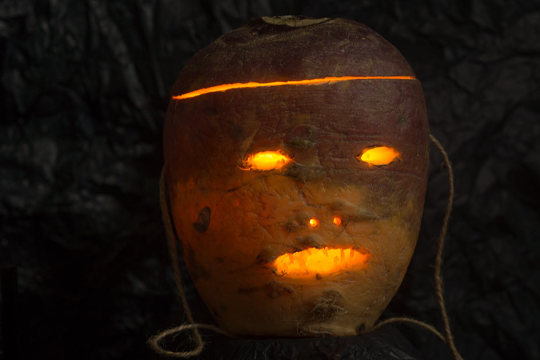
Whether the legend of Stingy Jack inspired or fueled or was created-by the gourd-carving practice, by the 19th cent, Irish, Scottish, and Welsh alike were annually carving jack-o'-lanterns out of turnips & rutabaga & beets & potatoes, and lighting them up to ward off Jack and other wandering spirits. Immigrants carried the tradition to North America, where pumpkins were indigenous and much easier to carve.
And so the modern Jack-o'-Lantern was born!

Not that gourd lanterns were anything new. Metalwork was expensive, after all, and gourds worked as-well-as and better-than-most crops when it came to carving a poor farmer's lantern.
As for carving human faces into vegetables, that supposedly goes back thousands of years in certain Celtic cultures. It may even have evolved from head veneration, or been used to represent the severed skulls of enemies defeated in battle. Or maybe not! Like many human traditions, jack-o'-lanterns evolved over multiple eras and cultures and regions, in some ways we can trace and others we can only guess at. But at the end of the day, it makes a damn good story, and a spooky way to celebrate—which is as good a reason as any (and a better reason than most!) to keep a tradition going.
In conclusion: happy spooky season, and remind me to tell yall about plastered human skulls one of these days 🎃
srcs 1, 2, 3
2K notes
·
View notes
Text
Women writers of the Victorian era regarded the fairy tale as a dormant literature of their own. When Charlotte Brontë's Jane Eyre hears hoofbeats approaching her in the dark, ice-covered Hay Lane, "memories of nursery stories" immediately flood her mind, especially the recollection of "a North-of-England" monster capable of assuming several bestial forms. But the beastly apparition Jane expects turns out to be Rochester, the "master" whom she promptly causes to fall off his horse and who will eventually become her thrall. Rochester himself soon shows his own conversance with, and respect for, powers he associates with the magical women of traditional fairy tales. "When you came on me in Hay Lane last night," he tells Jane, "I thought unaccountably of fairy tales, and had half a mind to demand whether you had bewitched my horse. I am not sure yet. Who are your parents?" When Jane replies that she is parentless, Rochester endows her with a supernatural ancestry. Surely, he insists, she must have been "waiting for [her] people," the fairies who hold their revels in the moonlight: "Did I break one of your rings, that you spread the damned ice on the causeway?"
Here and elsewhere in Jane Eyre, Charlotte Brontë takes even more seriously than her two characters do the potency of the female fairy-tale tradition to which she has them refer. Karen E. Rowe, who has so ably written on that tradition, was the first to show how fully saturated Jane Eyre is with patterns drawn from major folktales such as "Cinderella," "Sleeping Beauty," "Blue Beard," and, as a prime analogue for Jane's developing relationship with the homely Rochester, from "Beauty and the Beast," the 1756 Kunstmärchen (or literary fairy tale) adapted and popularized by Madame Le Prince de Beaumont.
Nina Auerbach, Forbidden Journeys: Fairy Tales and Fantasies by Victorian Women Writers
669 notes
·
View notes
Text

The Specter Moose from Maine.
It is described as a colossal white or gray moose, towering 10 to 15 feet tall, weighing nearly 2,500 pounds, and adorned with immense antlers spanning 10 to 12 feet, far surpassing the average male moose.
First reported in 1891 by hunting guide Clarence Duffy near Lobster Lake, subsequent sightings and encounters have occurred, with some claiming it to be bulletproof due to its ability to withstand shots and charge with a furious roar.
While it has become a part of local folklore, explanations range from it being a rare albino or leucistic moose, a hybrid between a moose and an elk, or a relic of ancient megafauna that survived the Ice Age.
Despite its uncertain nature, the Specter Moose remains an enigmatic figure in the narratives of Maine's wilderness, captivating the imaginations of locals and enthusiasts alike.
Follow @mecthology for more myths and lore.
Source: Cryptidwiki and legendsofamerica
#specter moose#specter#maine#folklore#north america#folktales#supernatural#mythical beasts#mecthology#legends#lores
6 notes
·
View notes
Text
Writing Notes: Horror
Horror is a genre within creative writing that relies on one thing: instilling a sense of fear in the reader.
The horror genre is multifaceted—there is a kind of horror for every kind of person.
For some, the most effective scare is the idea of being trapped in a haunted house. For others, it’s being chased by a serial killer on Halloween.
Some of the best horror comes from scary things that can manipulate an audience’s feelings, creating a sensation of uneasiness and fear that stretches beyond consciousness and permeates deep within the psyche.
Horror writing is sometimes categorized within the broader category of thrillers, but not all horror follows the thriller structure.
Classic horror fiction—whether expressed as a novel, novella, short story, or film—will tap into topics that reliably frighten most humans.
Common topics include ghosts, werewolves, vampires, zombies, serial killers, murderers, and the fear of the unknown.
These horror tropes can often devolve into clichés.
A downside of horror’s popularity is that many horror books and movies recycle old content in non-creative ways, but when properly executed, horror stories can thrill audiences and even provide commentary on the human condition.
Horror Subgenres
1. Apocalyptic - In this subgenre, the world is ending or society is collapsing. When this happens, it’s usually because of some creature, demon, or religious event (while climate-oriented apocalypses are more sci-fi).
2. Body Horror - Involves the mutilation, experimentation, or violation of the human body. It can focus on disease, dismemberment, infestation, sexual acts, or a complete transformation of the physical form.
3. Comedy - Horror and comedy seem so at odds with each other, but they work so well together (kind of like spice and chocolate). A trademark of comedy horror is how the protagonist somewhat stumbles through the story, arriving at the end through luck and ridiculous happenstance rather than skill or growth.
4. Cosmic/Lovecraftian - With its origins largely attributed to H.P. Lovecraft, cosmic horror makes us feel small against a threat that is ancient, massive, and incomprehensible. Cosmic horror looks at intergalactic entities, ancient gods, the machinations of the universe, and how helpless we are against it all.
5. Dark Fantasy - Another crossover, this time with the fantasy genre. In dark fantasy, you have elements of magic, fictional creatures or worlds, and everything else that makes fantasy great, plus you add in a good dose of scares. This can also involve other subgenres, like body horror.
6. Dark Romance - Another crossover genre, dark romance takes the feel-good romance genre and makes it horrific. While this subgenre can simply include morally questionable characters and a grittier tone than most romance, it can also include kidnapping, forced confinement, BDSM, psychological and physical abuse, and sexual violence or sex where there is no consent. Bear in mind that it still needs to include the tenants of romance stories, though.
7. Extreme Gore - Not for the faint of heart, this subgenre includes books that have detailed torture scenes or otherwise disturbing and depraved acts. This genre is all about shocking your audience with how awful your characters act or are treated.
8. Folk Horror - Embraces urban legends and folktales. These range from old pagan gods in the woods to weird rituals performed by isolated groups or villages. Sometimes there is a supernatural element to them, even if the “supernatural” is simply perceived or believed by some characters (e.g., Midsommar).
9. Found Footage/Documentaries - Though this subgenre is more common in films than books, found footage and documentary horror stories are about a crew of people recording their experiences, usually unaware of the true danger they are about to face.
10. Gothic - The great-grandparent of modern horror, gothic horror is the brooding, atmospheric genre containing what most of us would consider classics (e.g., Dracula and Frankenstein). Sometimes you throw in a dash of romance, but these tales tackle topics like death and mortality.
11. Post-Apocalyptic - After some world-ending disaster, how horrifying have things become? Post-apocalyptic horror shows us a world without rules or structure. It can contain unrealistic elements (zombies, demons, etc.) or realistic possibilities (cannibals, gangs, and so on).
12. Psychological - Places the spotlight on trauma, mental health, manipulation, phobias, and everything else that causes you to become stressed and anxious. Home invasion stories (i.e., The Strangers) fall under this subgenre.
13. Slasher - Involves violent horror that is more about a single killer stalking and eventually killing a group of people (traditionally targeting teens and using a blade). This subgenre isn’t necessarily as violent or gory as others, but uses suspense to make the reader hold their breath.
14. Splatterpunk - Is known for its disregard of limits when it comes to violence—both physical and sexual. Gore and depravity are grossly abundant.
15. Supernatural/Paranormal - Some folks separate these two subgenres into different categories, but there is so much overlap that they’re basically the same. If you have to, think of supernatural horror as stories that involve werewolves, witches, vampires, and other monsters. Paranormal horror, on the other hand, involves ghosts, demons, and haunted houses.
Tips for Writing Horror
1. Read more horror. There’s no better way to understand what a good story looks like than to read one for yourself. Read as much as you can so you are aware of what other horror writers are doing.
2. Focus on your own fears. Much like comedy, horror benefits from authenticity. So get personal: If you can scare yourself, you can probably scare an audience.
3. Create three-dimensional characters. Write characters whose character flaws feed the action of the story. All good literature and film contains well-wrought characters with desires, emotions, and a backstory. The more human you make the characters of your story or screenplay, the more their missteps and bad choices will resonate with an audience.
4. Recognize that the real can be scarier than the surreal. Sure, you can make up an army of googly-eyed bad guys or plant a severed head in your main character’s bed, but will you really scare your reader? Not necessarily. In most cases, psychological horror sticks with audiences far longer than a jump scare or gross-out moment in a slasher film. Toying with people’s real-life fears tends to scare them much more than just grossing them out.
5. Use the environment. Scary movies and television shows can use jump-scares as an easy way to frighten an audience, but writing scary literature requires its own method of manifesting fear. Setup your environment in a vivid way to fully immerse your readers into your setting. Vividly describing an enclosed space can elicit feelings of claustrophobia. A dark and quiet house becomes more frightening when a character suddenly hears the creak of an upstairs floorboard. Being an outsider in an unfamiliar place, like a small town with no cell phone service and where everyone knows each other, is already unsettling—and if you add a malicious paranormal force to such a setting, you can enhance the feeling of isolation and ramp up the anxiety of the scenario.
6. Write longer sentences. You can heighten your readers’ fear by writing paragraphs with longer sentences. Periods provide natural pauses for readers to take a breath, but if you stretch out your sentences, you build anticipation for the reader—which they might not even realize until they reach the end of the sentence. By using tactics like this, you immerse the reader into your horror story, making them feel what the main character feels and creating a heart-pounding connection.
7. Make your readers breathe faster. Whereas long sentences can amplify the intensity of a story, short one-sentence paragraphs can force your readers to take more frequent breaths while following your narrative. Crafting abrupt lines builds tension in your scary story writing, making the readers’ eyes move more quickly down the page searching for the relief that the protagonist is safe. This can make your audience breathe faster, contributing to the feeling of panic and anxiety.
8. Leverage fear of the unknown. Fear of the unknown is a common theme that can be tracked throughout many of the best stories in horror fiction and horror movies. When there is something that negatively affects us that we cannot control or properly identify, it creates a feeling of panic and dread. Teasing your readers with something not quite definable or a bad guy no one knows how to stop can increase the level of tension and fear when writing horror stories.
9. Lean into dark imagery and your readers’ collective imagination. Consider what images might be frightening to a reader (and yourself). How much of a description of a clown do you need in order to make a reader feel uneasy? How large and grotesque does a rat need to be? Leaving some of these images more general than specific will allow a reader to fill in the blanks with what is most horrifying to them. Example: If you read the word beast, what do you see in your imagination? Most words carry connotations and personal connections. Allow your words to work for you to create the maximum scare.
10. Want tension? Sprinkle in some foreshadowing. Foreshadowing is a powerful tool in your writing arsenal, but it is particularly effective in horror, especially when writing in third person. Foreshadowing is when an author alludes to a future event by showing us something now. The key to foreshadowing is to use it sparingly. We want to up the tension and the fear our readers are experiencing while they yell at the oblivious protagonist not to open the door. We don’t want the reader to know every single thing that’s going to happen.
11. Focus on the moment where things shift. You should consider a pivotal scene in your story idea and try to build around that scene or that moment where the plot actually “shifts.” Sometimes that could be reflected in a realization by the protagonist. Other times it can be represented in some type of ironic twist at the end. By looking at that singular element of your story idea, you cut away the fat so that the reader is left only with the most resonant part of the story.
12. Establish the mundane. Mundane is just a fancy way of saying normal, but the message still rings true. Most story structures tell you to start by establishing the Ordinary World: what our protagonist’s normal life is like. This is important for showing us how important the larger conflict is, because it threatens the protagonist’s normal. In horror, establishing the mundane is arguably more important. In a story where connecting with the character and empathizing with them over the godawful stuff you, the author, put them through, the reader needs to understand just how bad life has gotten. Then you can take both your characters and your reader from a place of comfort and familiarity and plunge them into whatever shadowy hell you’ve concocted.
13. Choosing your POV. By choosing to write your story from a first-person perspective, you are putting the reader exactly where your character is. There are 2 types of third-person POV—limited and omniscient. It is advisable to stay away from omniscient. Part of writing a good horror story is withholding information from the reader, which third-person omniscient doesn’t really allow for. Considering the pros and cons of the different points of view, choose the right one for your story.
14. Avoid clichés. Clichés are boring and predictable, and a horror scene that is predictable is likely to not be scary. A good horror story can still use familiar horror tropes, but a great horror story makes them its own. Look beyond the obvious when trying to write a scary scene—what is something readers wouldn’t expect? How can you surprise them with fear? Use enough of the existing tropes to be identifiable as horror, but make sure you insert your own originality into the mix. One of the reasons people gravitate to genres in general is because they have certain expectations for what should happen in the story. Look for ways to flip archetypes on their heads.
15. Practice. If you’re struggling to get a handle on writing a good story that’s scary, practice with story prompts (see some sample prompts below). Writing prompts can expand your range of thinking and open up new avenues of imagination that you hadn’t thought of before.
Horror Writing Prompts
A scary doll comes to life.
A scene from a nightmare comes true the next day.
Days go by, and your parents don’t come home.
You feel yourself slowly becoming a monster.
Your friends start to disappear, and no one else notices.
You’re lost in the woods, and you don’t know how you got there.
You’re inhabited by a ghost that controls you and makes you do crazy things.
You have no reflection in the mirror.
The teacher is a monster, but no one will believe you.
You hypnotize your brother, and you can’t snap him out of it.
A fortune teller reveals that you are evil.
Someone follows you home, and it’s your exact double.
You find a diary that tells the future.
Every time you wake up, you’re a different person.
Your parents explain that you are actually an alien from another planet.
You know someone is watching you day and night from the house across the street.
You realize you are shrinking.
While reading a scary book, you realize that you’re a character in it.
Someone is living in your mirror.
Everyone knows the new neighbors are vampires, and the kids invite you over for a sleepover.
All the cats in a small town vanish in the middle of the night….and all that remains is a set of big, scary teeth smashed into a car door.
A group of friends takes on the zombie apocalypse.
Strange things start happening after the grandfather clock starts to speak.
You finally meet your child’s imaginary friend. Who turns out to be a serial killer.
When a local police officer goes to investigate the haunted house down the street, he finds a young girl who died decades ago.
Sources: 1 2 3 4 5 6
#writing notes#horror#writeblr#fiction#spilled ink#writing prompts#writers on tumblr#poets on tumblr#literature#writing tips#writing advice#writing prompt#writing reference#creative writing#dark academia#light academia#studyblr#lit#booklr#bookblr#writing inspiration#writing ideas#writing resources
229 notes
·
View notes
Text
Cultural Architecture: NWT Totem Poles - The Specifics Pt. 2

Among most of the totem poles we see throughout the Northern Water Tribe (NWT), four representations appear consistently throughout. For this post, I will be covering the final two.
Koi Fish
The third totem is clearly a koi fish with long whiskers and a marking on its forehead. In other words, it's a reference to the physical forms of the moon and ocean spirit. I can't help but wonder if Aang's realization of Tui and La's true forms was unconsciously informed by the all the koi head totems omnipresent throughout the NWT.
Culturally, koi fish are yet another example of the Chinese influence in the NWT. In Chinese culture, koi represent fame, family harmony and wealth. There's also a famous Chinese folktale about koi fish and other carp:
Along the Yellow River, there is a legendary waterfall that cascades from a magical mountain top known as Longmen (登龍門), meaning the Dragon's Gate. If a carp can swim upstream against the currents and hop over the waterfall into Longmen, the fish will transform into a dragon.
Thus, koi fish can also represent determination, courage, and perseverance. The connection between koi and dragons also strengthens the fan theory that the dragons Ran and Shaw might be the Fire Nation's equivalent to Tui and La. Perhaps the dragons are the spirit of Sun and Fire respectively?
Wolf
The totem beneath the koi depicts a wolf. The wolf head totem also bares a striking resemblance to the headdress that Sokka wears in "Day of the Black Sun" (Season 3, Episode 11). Wolves are prominent figures in the mythologies of many Indigenous American cultures, particularly those whose societies were oriented around hunting.
Within different Inuit groups, wolves are called amarok (multiple groups), amagok (Inuvialuit), and amaguk (Inupiat). These names refer both to normal wolves and to the gigantic, supernatural wolf of Inuit religion. There are two Amarok-focused tales that I'd like to detail in this post:
A persecuted and physically stunted boy seeks to increase his strength. When he calls out to the lord of strength, Amarok appears and wrestles him to the ground with its tail. This causes a number of small bones to fall from the boy's body. The Amarok tells the boy that the bones had prevented his growth; he instructs the boy to return daily in order to develop his strength. After several days of wrestling with the Amarok, the boy is strong enough to overcome three large bears, thus gaining him the esteem of his village.
The land was once full of caribou; the people lived well and were happy. But the hunters only killed those caribou that were big and strong. Soon all that was left were the weak and the sick. The people began to starve. And so they called upon Amorak, the spirit of the wolf, to winnow out the weak and the sick, so that the herd would once again be strong. The people realized that the caribou and the wolf were one, for although the caribou feeds the wolf, it is the wolf that keeps the caribou strong.
From these two stories, we get quite a nuanced conception of what the wolf represents in Inuit culture. While wolves represent strength in many cultures, these tales really emphasize the wolf as a creature that strengthens those around it. Through this worldview, we understand strength not as an innate or individualistic quality, but one that's nurtured through mentorship and interdependence.
This makes Sokka's adoption of wolf imagery during "Day of Black Sun" all the more appropriate. Sokka is certainly not the most powerful character in the show, but his role as the leader strengthens the group as a whole.
264 notes
·
View notes
Text
Posting this because I reblogged something about Usborne Books and apparently most people seem to associate Usborne with lift-the-flap books for preschoolers.
Which is weird because to me as a child Usborne books were some of the spookiest books I could get my hands on. They filled the same place as Dorling Kindersley - colorful, creative, informative books that were educational as well as fun to read. And their approach to myths and legends was, not going to lie, very formative for me. If it wasnt' for Usborne, there might not have been ABC.
And much like Dorling Kindersley, Usborne went through a phase of extreme creative experimentation before stagnating into safer forms of publishing. But for a while, Usborne books were mindblowing.
So what has Usborne done then that aren't lift-the-flap books for preschoolers? Well, a lot. Puzzle Adventures. Extreme map and code puzzles. How to Draw Books. Cut-out and build houses, Trojan horses, and dinosaurs (by Luis Rey no less). How to Be A Detective. Nature spotter's guides. Nature Search books. Facts and Lists books that instilled cosmic horror in me years before I knew what cosmic horror was. I could go on forever.
There was a series of excellent myths and legends books which I posted about before.
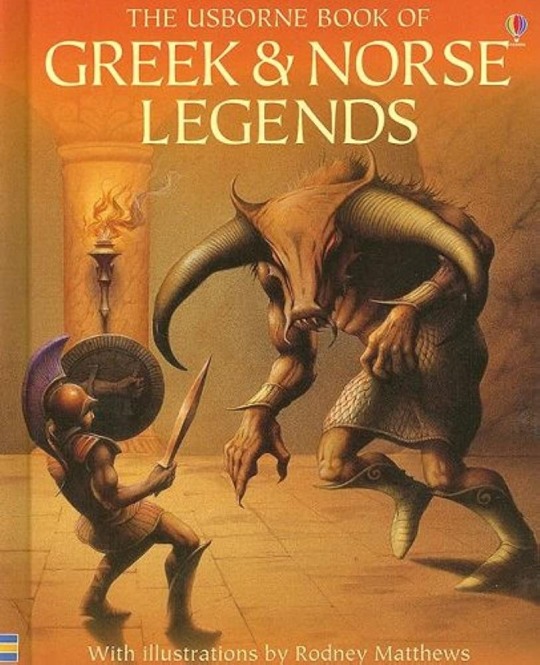

These were illustrated by Rodney Matthews and were every bit as metal as you'd expect from something by Rodney frickin' Matthews.
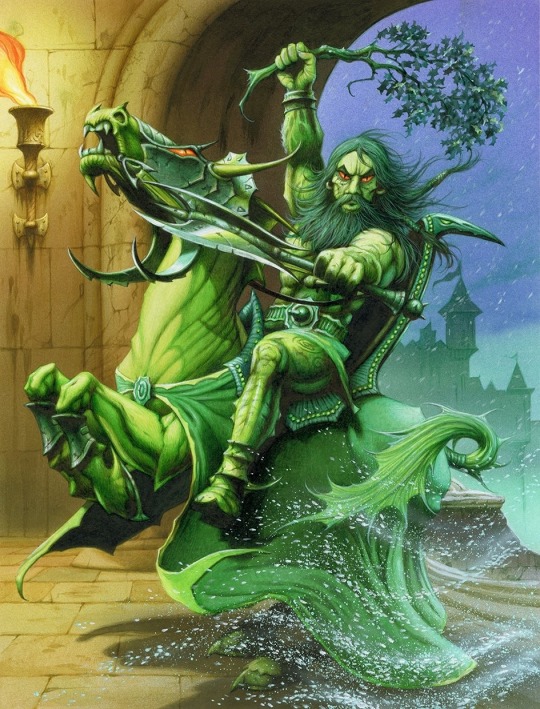
Then there were the Quest books which were Where's Waldo-esque books that followed a storyline in a fantasy world.

In this case, they showcased lush art by Nick Harris in which you find various items or characters to make the story progress, as well as other random things (find 10 rats, find 8 clownfishes, etc).

The Tabloid Histories books, oh my gosh.
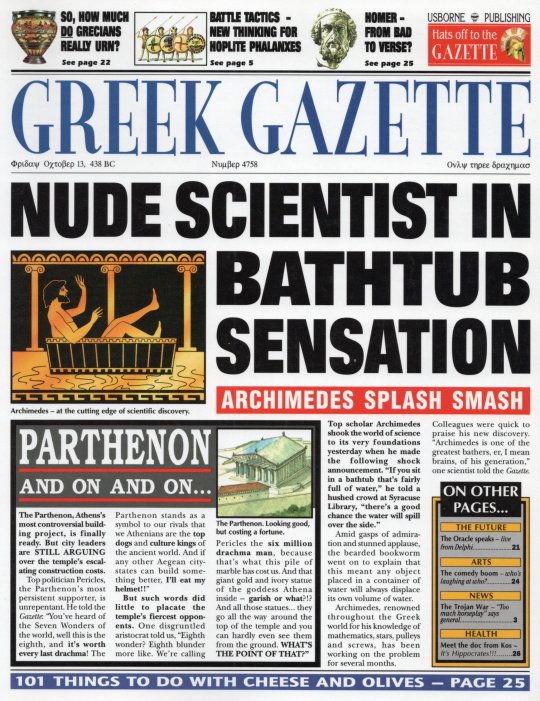
Egyptian, Greek, Roman, Medieval, etc. history told through tabloid articles and ads.

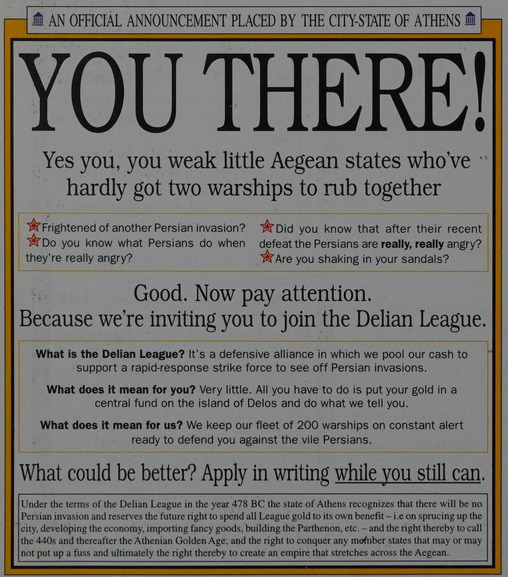

More about monsters though! There were books about folktales and legends illustrated by Stephen Cartwright.

For me it was my first time hearing of a lot of them, such as the Lambton Worm!

The Haunted World, now that was spooky! With lots of colorful, dripping art by Graham Humphreys.
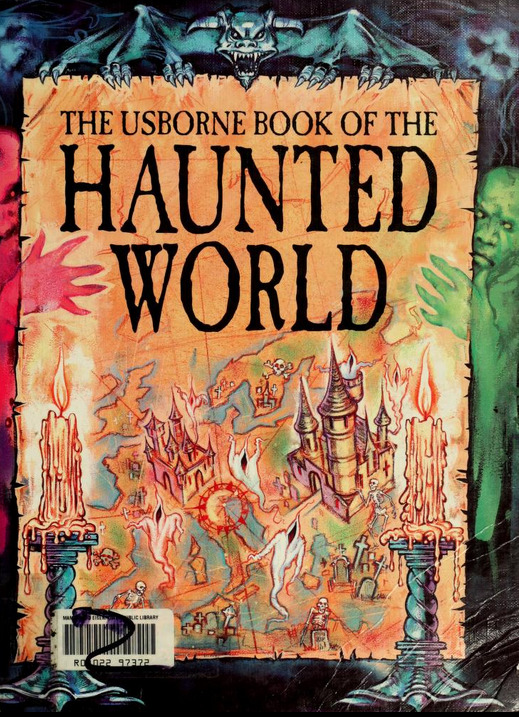
Introduced me to a lot of ghosts, vampires, and monsters from around the world. Such as the story of Arnold Paole!

And there were maps and diagrams...


... and lindorns [sic] and mokele-mbembes!


The Supernatural Guides had denser text but sadly have not been reprinted anytime recently.

The World of the Unknown series, though... ohohoho those were good.
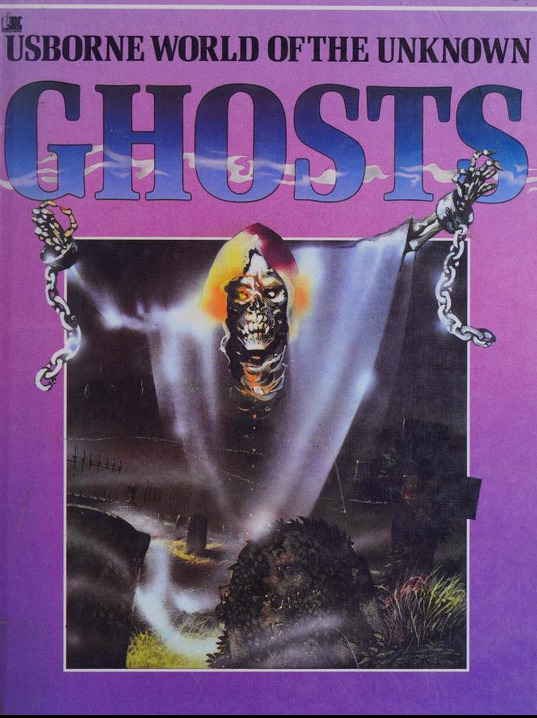
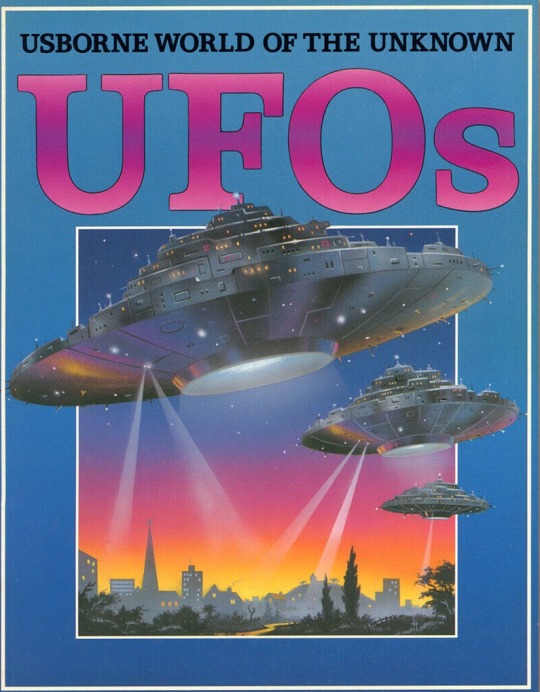
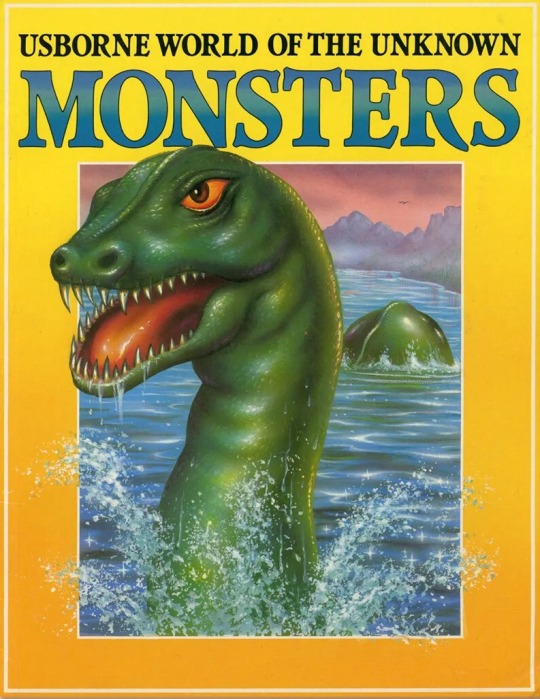
Of course (no offense to fans of ghosts and UFOs), I had eyes only for the Monsters book. With such gems as the Velue...

... the Lambton Worm...
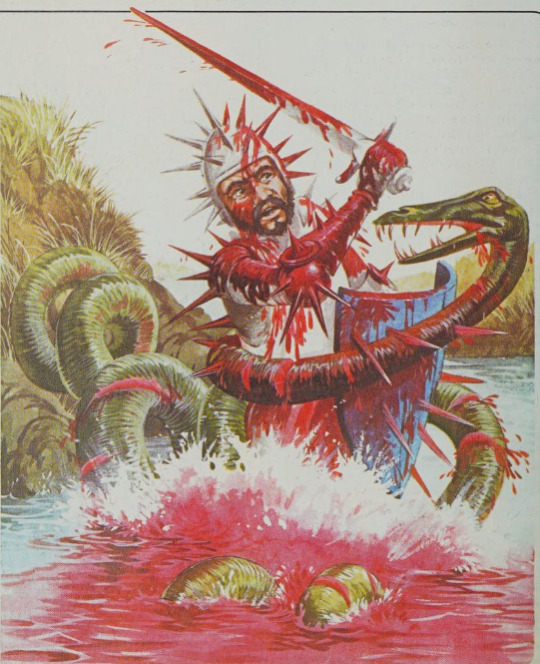
... and cryptozoological rubbish such as the Monongahela sea serpent (below), the Loch Ness Monster, the Abominable Snowman, and their ilk.

You know, the sort of thing that would keep a 7-year-old fascinated (and perhaps scared under the blankets) for weeks.
Anyway, yeah I just really love Usborne books. Or at least what they used to be.
314 notes
·
View notes